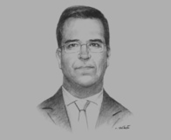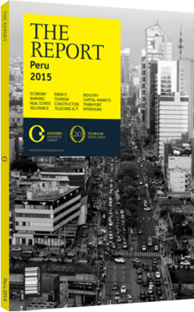Christian Laub, President, Lima Stock Exchange (BVL): Interview

Interview: Chrisrian Laub
Is the 5% tax on stock market profits likely to change?
CHRISTINA LAUB: It makes a difference if you compare Lima with Chile or Colombia. Foreigners investing in these countries will be taxed at 0%, which gives them a competitive advantage, but there are other incentives that can make a difference in Peru. Transaction costs, which were lowered by 50% in 2013, will be further lowered in the near future. More important than removing the 5% profit tax is having the same fiscal treatment as our Latin American Integrated Market (Mercardo Integrado Latinoamericano, MILA) partners.
There is no need for comparison with other stock exchanges to prove that there are differences in competitiveness: the average daily trading volume in Lima’s equity market is $15.1m, versus $150-200m for Peruvian companies listed on the New York Stock Exchange. This shows that domestic companies have enough liquidity, but that it is not located where it should be.
This is the biggest challenge, as investors buying shares in Peruvian companies can currently do it cheaper and with a 5% higher profit margin on a foreign exchange. Although the BVL has the capacity to regulate transaction costs, the Ministry of Finance has the ultimate authority to eliminate this profit tax. Indeed, the most viable way to achieve a repeal of the tax would be to promote a law at the congressional level.
How can the costs and bureaucracy that discourage smaller companies from listing be addressed?
LAUB: There has to be a streamlining process rather than incentives. Getting into capital markets is a major decision that yields many benefits – such as the ability to issue commercial paper, debt or equity – but also many responsibilities. Indeed, not all companies are willing to meet the requirements of transparency, corporate governance or openness to scrutiny.
The BVL has several programmes to help attract new companies to list, such as the Alternative Stock Market, where smaller companies are starting to issue commercial paper to get acquainted with the system. To get more medium-sized companies to list, the exchange needs two things: more flexible government regulations and more communication from listed companies.
Will future economic growth be market driven?
LAUB: While mining might seem the obvious choice, the real game changer over the next 10 years is going to be infrastructure, as new projects start and some existing ones expand. The government’s focus needs to be on reducing the $90bn infrastructure deficit, which affects roads, ports, airports, sewage facilities and transmission lines. Financing this will require a combination of banking and capital markets – both local and international. Institutional investors from Chile, Colombia and Peru hold combined assets in excess of $500bn, which shows there is no lack of funds.
The local capital market cannot do it alone, though it will play a very important role, much as it did after the international crisis of 2008 saw foreign financing mechanisms dry up. As Asian and European economies improve, investors will shift their sights from Latin America, leaving regional capital markets with an even more paramount part to play for sustainable growth.
Why has the change in regulation allowing for simultaneous initial public offering listings in Peru, Colombia and Chile taken three years to apply?
LAUB: Changing one country’s regulations is already difficult, but doing so in three countries at once is much harder. We are working towards a more integrated capital market, with offerings of fixed-income securities carried out automatically in all three countries.
Another important step is raising the investment limit for institutional investors in MILA countries, which would add a lot of liquidity to the markets by increasing the number of participants. It would also benefit exchange rates between the countries, as it would lower the cost of acquiring currency by not having to first buy dollars. We are also developing the derivatives market for more affordable coverage of currency exposure.
You have reached the limit of premium articles you can view for free.
Choose from the options below to purchase print or digital editions of our Reports. You can also purchase a website subscription giving you unlimited access to all of our Reports online for 12 months.
If you have already purchased this Report or have a website subscription, please login to continue.

